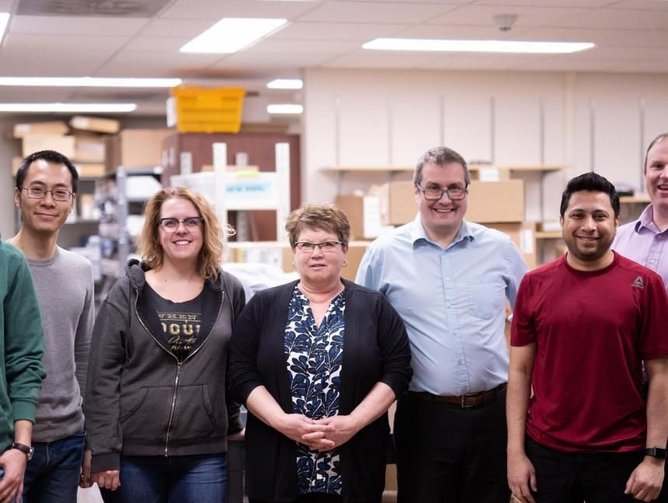Modernizing procurement with a reliable team at the University of Saskatchewan
Richard LeBlanc joined the University of Saskatchewan a year ago when a new position as Director of Enterprise Procurement was created to modernize the establishment’s procurement operations. Procurement supports diverse areas, enabling the day-to-day running of most of the campus’ administration. “From students in the classrooms and lecture halls to labs and agricultural research, members of my team have bought something that helped enhance their experience, their work, or their research,” LeBlanc notes.
With the university spending approximately $400mn (CAD) per year, effectively managing procurement is vital. The university has recently released its strategic plan for 2025, featuring pillars and aspirations which are guiding the procurement team’s ongoing efforts. As well as an almost entire overhaul of how procurement processes are managed, the university-wide strategy covers projects that align multiple departments. “Some of the key themes of our vision includes the indigenization of the university; we've been working on a procurement strategy for indigenous business for several months,” says LeBlanc. “It aligns with the university's main objectives and helps us further advance the university's reconciliation efforts, as well as strengthen our ties with the communities that support us on the business side.”
As well as reconciliation efforts, the vision targets modernization and the introduction of new technologies, which marks a transition from manual processes within the procurement department. Several concepts have been suggested as alternatives to the team’s current manual activities, with a focus on automation and streamlining. These ideas, which LeBlanc stresses have all derived directly from the team itself, have led to projects varying in scale: from improving processes and policy work to integrating a risk framework. Communications and plan engagement functions will also be updated to improve the adoption rate of university-wide contracts. By modernizing the process whereby stock is replenished in the facilities warehouse, the team has successfully reduced buying time by approximately 20%.
Despite many of the team’s goals being currently underway, others are “a little bit broader in scope” – however, even with an end in sight LeBlanc stresses the importance of always looking forward. “In regards to modernization, I think it is a journey that should never end. If you look back at the last five years, some of the enhancements, the new capabilities, and the technologies have advanced so much. You've always got to keep growing and stretching in order to take advantage of those advances, or else you will just stagnate.”
Essential to the university’s procurement transformation was the introduction of a procurement modernization working group, which has collected representatives from across campus. Through collaboration with the university’s Information and Communications Technology (ICT) group, the team has been able to better collect and store financial data. With greater access to data, the university has noticed an increase in efficiency and improved objectives with clear targets. “They've managed to pull all this information together for us and make it easy to gather a complete picture, and then analyze that. They've been working on improving some of the systems that we do use to make the team’s job easier and more efficient.”
With key targets in sight, it is easy to keep members of staff motivated, LeBlanc reveals. The department has identified 15 categories for improvement, with staff constantly highlighting developments that could be made within their operations. LeBlanc notes the importance of ensuring any new processes or technologies that are introduced are compatible with the department remarking that a fundamental aspect of his role it to “make sure the team feel like changes are made with them, not to them”.
“They've come up with a ton of ideas to improve our operations, he continues. “A lot of these are just little things that make the client's life a little bit easier or better, or eliminate the need to go back to the client and improve time efficiency. This allows us to get the job done right the first time. The team is a constant source of ideas and energy, and they're very invested in the work that they do. If we have a good idea, they'll help build it up. If we have a less than optimal idea, they'll help us strengthen it by identifying the challenges within it. They're very engaged and committed and that makes it easy.”
As well as the focus on efficiency and using technology to streamline, the university has highlighted sustainability as a key target under its vision. With operations underway to improve the procurement team’s environmental impact, such as focusing on the materials selected when sourcing in order to reduce the campus’ climate footprint, the university is also targeting financial sustainability and sustainable business practices. The establishment’s procurement operations have traditionally centered on a decentralized model, with each business unit having its own supplier base. However, in efforts to streamline buying and costs, the team are turning to a more centralized approach.
Working within the collegial environment of a 100-year-old campus, LeBlanc has a big task ahead of him to bring processes up to date. The director has attributed the successful changes within sustainability and technology to the work of the team, from identifying issues to generating the concepts. With a long way to go, LeBlanc looks forward to continuing to build upon the department’s positive energy and introduce new operations that complement them.





